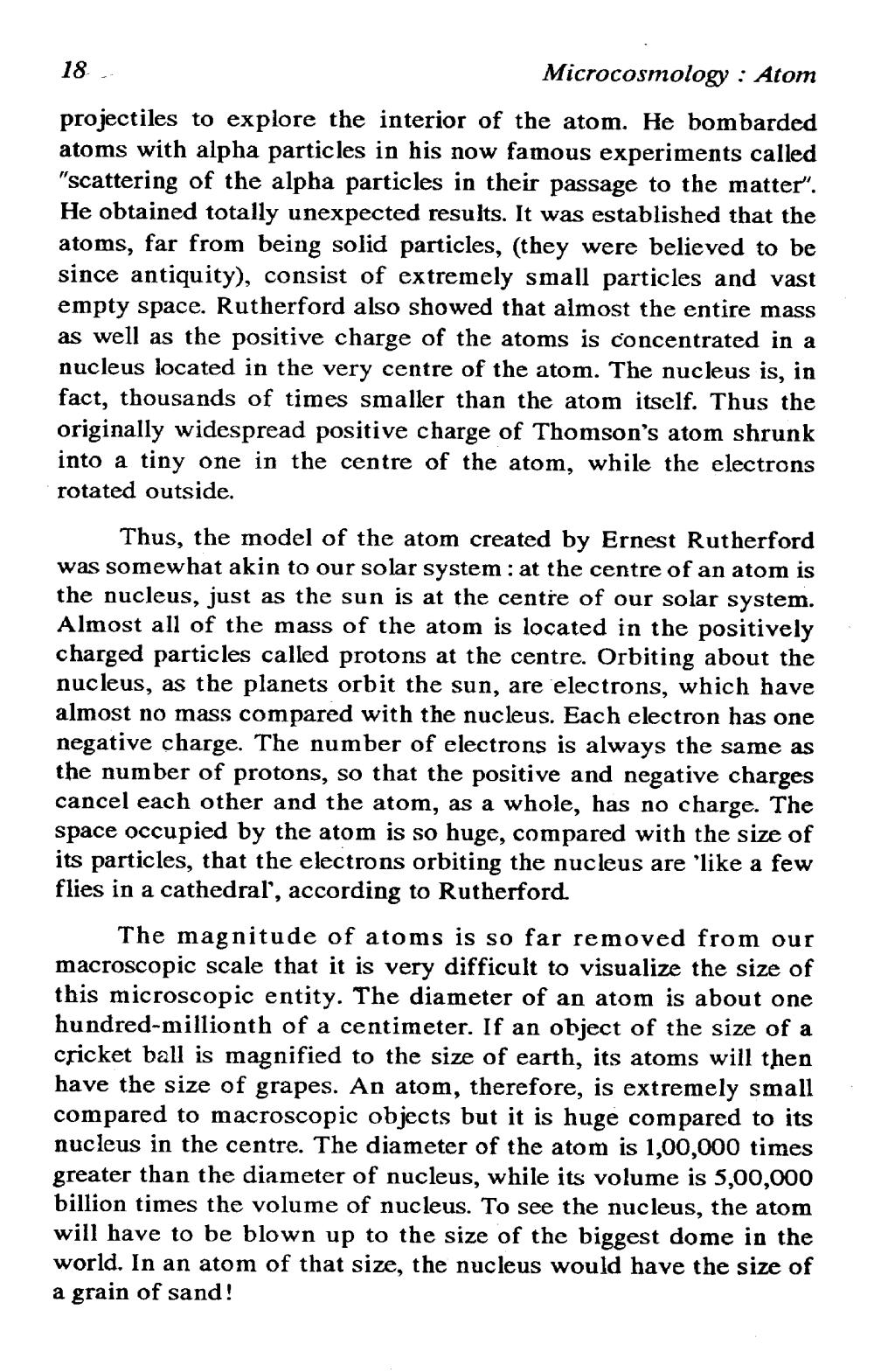________________
18.
Microcosmology: Atom
projectiles to explore the interior of the atom. He bombarded atoms with alpha particles in his now famous experiments called "scattering of the alpha particles in their passage to the matter". He obtained totally unexpected results. It was established that the atoms, far from being solid particles, (they were believed to be since antiquity), consist of extremely small particles and vast empty space. Rutherford also showed that almost the entire mass as well as the positive charge of the atoms is concentrated in a nucleus located in the very centre of the atom. The nucleus is, in fact, thousands of times smaller than the atom itself. Thus the originally widespread positive charge of Thomson's atom shrunk into a tiny one in the centre of the atom, while the electrons rotated outside.
Thus, the model of the atom created by Ernest Rutherford was somewhat akin to our solar system: at the centre of an atom is the nucleus, just as the sun is at the centre of our solar system. Almost all of the mass of the atom is located in the positively charged particles called protons at the centre. Orbiting about the nucleus, as the planets orbit the sun, are electrons, which have almost no mass compared with the nucleus. Each electron has one negative charge. The number of electrons is always the same as the number of protons, so that the positive and negative charges cancel each other and the atom, as a whole, has no charge. The space occupied by the atom is so huge, compared with the size of its particles, that the electrons orbiting the nucleus are 'like a few flies in a cathedral', according to Rutherford.
The magnitude of atoms is so far removed from our macroscopic scale that it is very difficult to visualize the size of this microscopic entity. The diameter of an atom is about one hundred-millionth of a centimeter. If an object of the size of a cricket ball is magnified to the size of earth, its atoms will then have the size of grapes. An atom, therefore, is extremely small compared to macroscopic objects but it is huge compared to its nucleus in the centre. The diameter of the atom is 1,00,000 times greater than the diameter of nucleus, while its volume is 5,00,000 billion times the volume of nucleus. To see the nucleus, the atom will have to be blown up to the size of the biggest dome in the world. In an atom of that size, the nucleus would have the size of a grain of sand!




